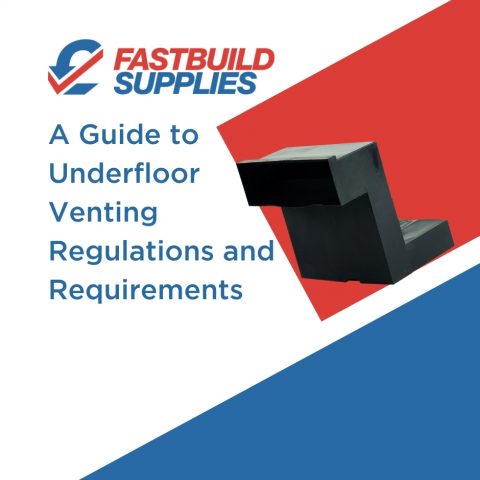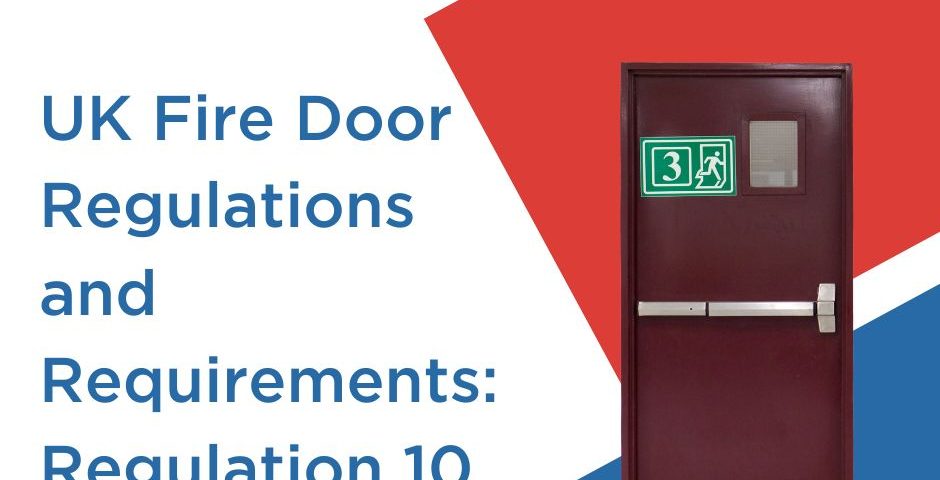
Fire doors are a crucial part of any domestic or commercial property; they can offer valuable time for occupants and emergency services to act in the case of a fire. Those precious seconds can be crucial, so fire doors must be installed to the regulations set out by the UK government.
We break down some critical elements into concise and commonly asked questions regarding the fitting and maintenance of fire doors.
Fastbuild offers next day delivery to your site or home to ensure you have all the building supplies you need to complete your latest job. We also have a wealth of information on all things construction in our knowledge centre.
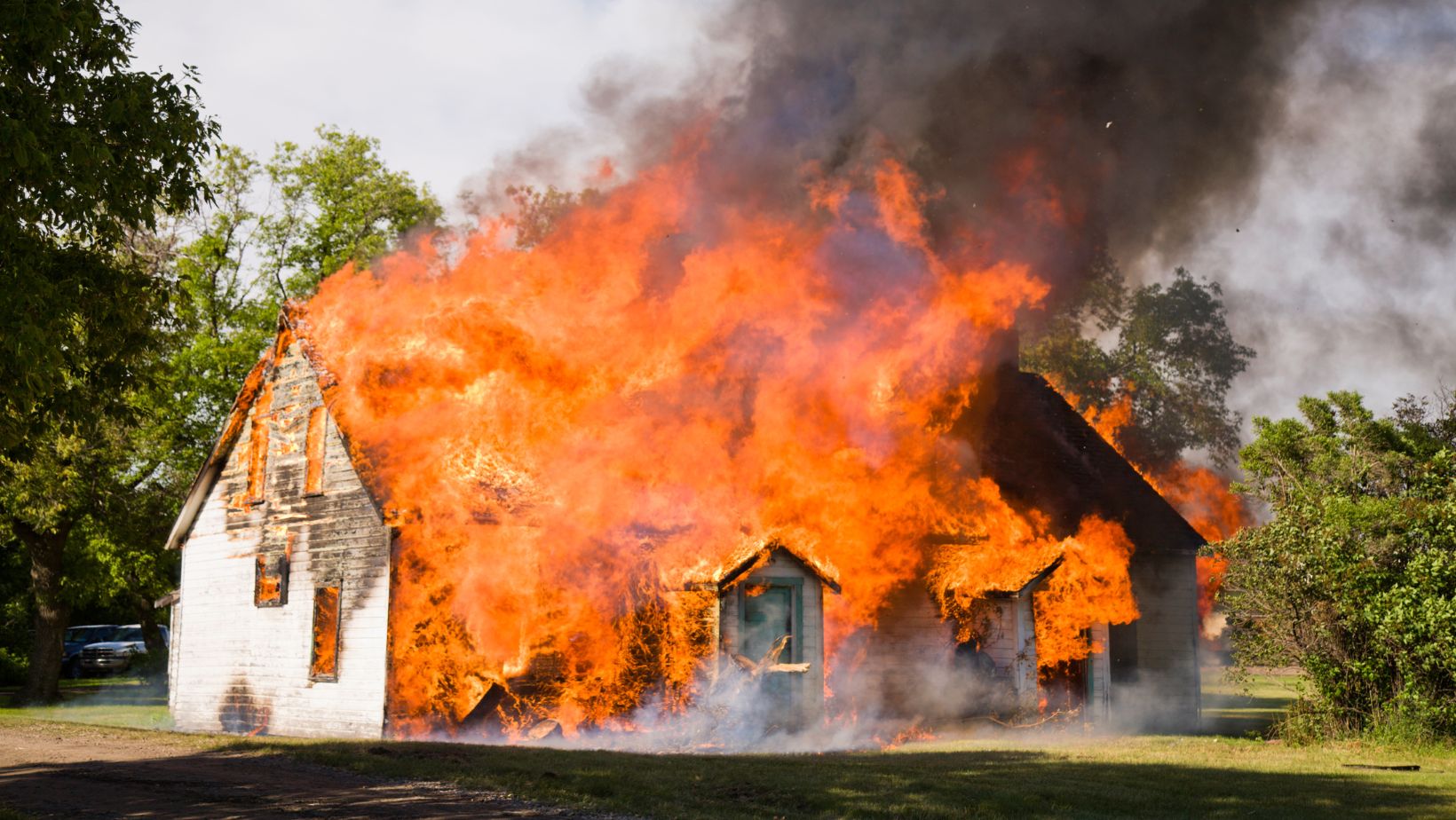
What Is A Fire Door?
Fire Doors were implemented into the design of domestic and non-domestic properties to limit the spread of fire if a property severely caught alight. Correctly installing fire doors is crucial in providing both occupants and emergency services as much time as possible to exit the building and resolve the fire.
A fire door can keep a fire at bay for at least half an hour, but only if it is constructed by a certified manufacturer and installed correctly, so abiding strictly by the UK fire door regulations could save lives.
The Most Common Reasons Fire Doors Fail On Inspection
In 2014, the FDIS conducted an extensive inspection of fire doors within the UK, to which they published their findings and the most common reasons that a fire door would fail its inspection. So these are the things to look out for when installing a fire door or carrying out your preliminary inspections:
- Over 61% of inspected doors had no or faulty smoke seals
- A third has incorrect fire door signage
- 34% of inspected doors have an excessive gap between the door and frame
- 15% had damage to the door leaf
- 1 in 5 has unsuitable hinges
What Are The Fire Door Ratings?
Each regulation fire door is assigned an FD rating. This informs us how long that specific door can withstand an extensive flame. These ratings are given to the doors after the manufacturers conduct stress testing in accordance with government guidelines. For example, a fire door with the rating of FD90 is capable of providing 90 minutes of protection.
The most common forms of FD ratings are:
- 30 minutes of protection: FD30
- 1 hour of protection: FD60
- 1.5 hours of protection: FD90
- 2 hours of protection: FD120
UK Fire Door Smoke Seal Regulations
It isn't only the flames of a fire that poses a threat to anyone inside a building ablaze; what often takes the life of someone trapped inside is smoke inhalation. That's why an adequately fitted smoke and fire seal on a door can mean the difference between life and death in an emergency situation.
The way a smoke or fire seal works in the event of a fire is as soon as the temperature in the surrounding area of the door reaches 200 degrees celsius, which is usually about 10-15 minutes after the fire has started, the seal will swell and close the gap between the door and frame.
Intumescent fire door seals should be attached to the stiles and head of a fire-resisting door set. These seals are fitted into grooves routered into the door or the frame. Or, as an alternative, the seals can be surface mounted.
Each type of intumescent material functions slightly differently to perform a somewhat different function; however, modern fire door seals use both the intumescent and cold smoke elements in one.
- Low-pressure seals expand in all directions; however, they offer little help to the door to resist distortion due to the fire.
- High-pressure seals exert pressure mainly in one direction and provide some resilience to distortion of the door leaf in the case of a fire.
- The third type of intumescent material, which you can buy in different grades, expands in all directions and creates pressure.
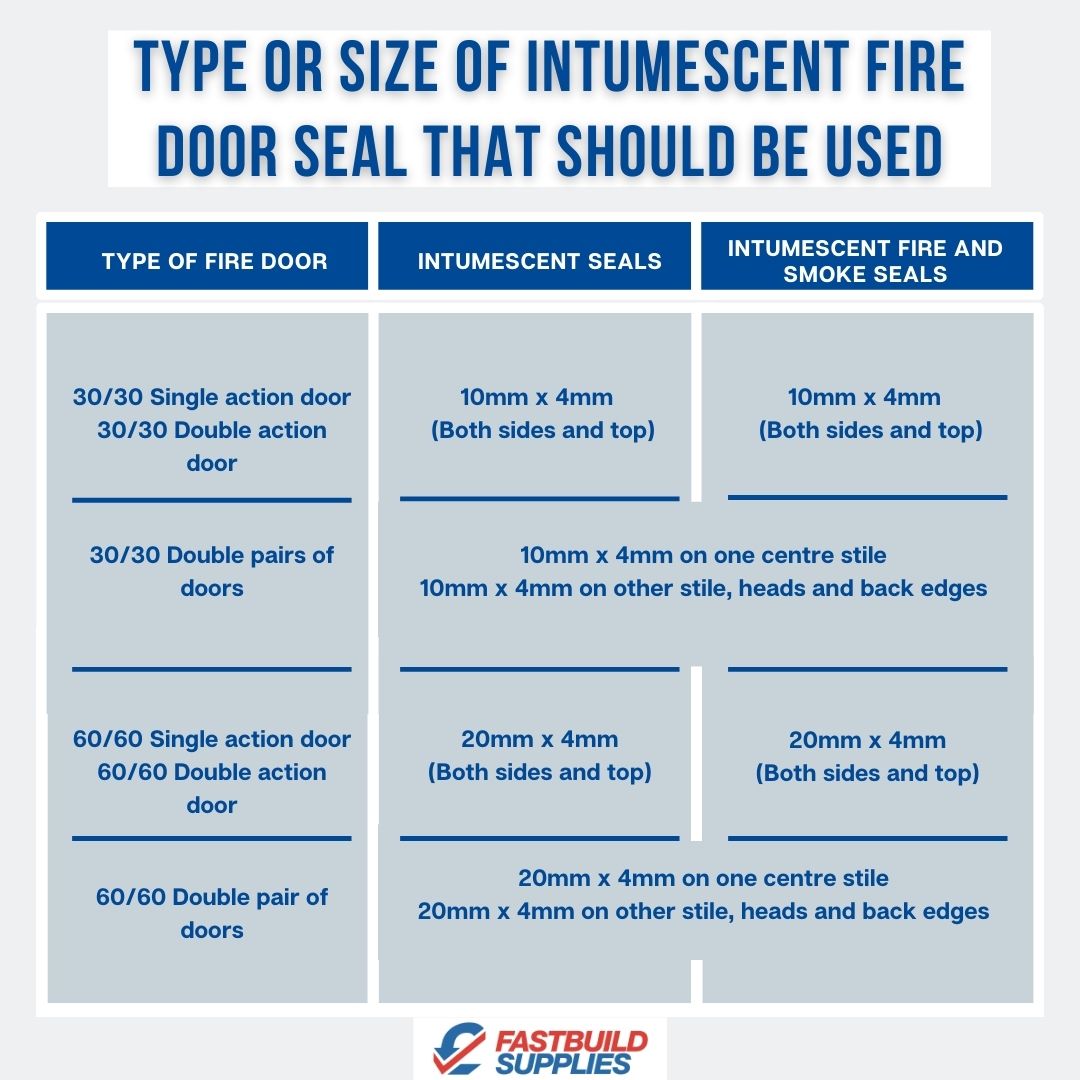
The majority of modern fire doors amalgamate the intumescent and cold smoke elements into a singular seal. The grooves should be cut wider than the seal to account for the pre-painting of the door and the shrinkage of the timber.
Top Tip: If in doubt, it is best to check with the fire door manufacturer which type of seal would be appropriate.
Fire Resistant Glazing In Fire Doors
It isn't an uncommon sight to have a proportion of glass situated within a fire door. Any existing fire door can be modified or replaced to include a glass panel to allow light. However, this glass panel must be heat-resistant and mounted within a suitable enclosure.
Nowadays, the glass in a fire door can range from a small central panel for visibility to entire frameless glass doors that hold a fire rating.
It is a requirement that fire-rated glass is used on all pyropanel fire doors. This is to prevent the spread of smoke and flames, to which fire-rated glass has been tested and approved as an effective barrier.
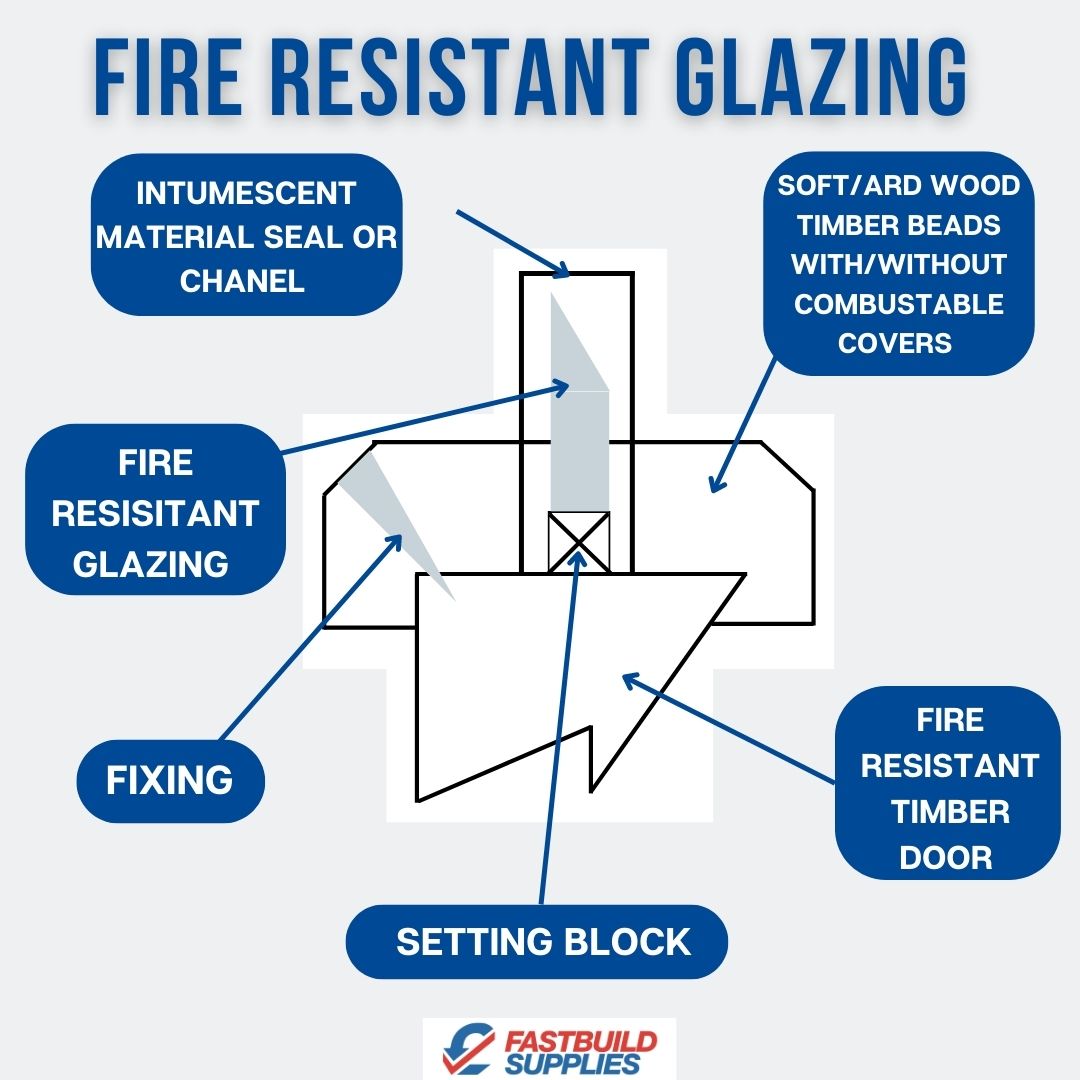
Particular fire-certified glass doors can even prevent the spread of heat. In contrast, regular glass can only withstand temperatures up to 120 degrees Centigrade; a fire-rated glass fire door can withstand temperatures above 900 degrees Centigrade. However, it is vital that fire glass doors and any fire door be fitted correctly and in accordance with the Government's specifications.
Can I Upgrade My Fire Door?
In previous decades it was a prevalent practice to make alterations to existing doors on a property to improve the performance of these doors and bring them up to fire regulations standards. However, this was before an everyday use of doors with a hollow core; we now often use lightweight doors internally. However, these are liable to warping and cannot be upgraded to a fire door.
Because of this, it is not acceptable good practice to fit entirely new doors when a fire door is required. You can often order entire fire doors with FD30 and FD60 protection online.
Here is a simple guide as to whether the fire door in question can be upgraded or if you will need to purchase an entirely new FD-rated door.
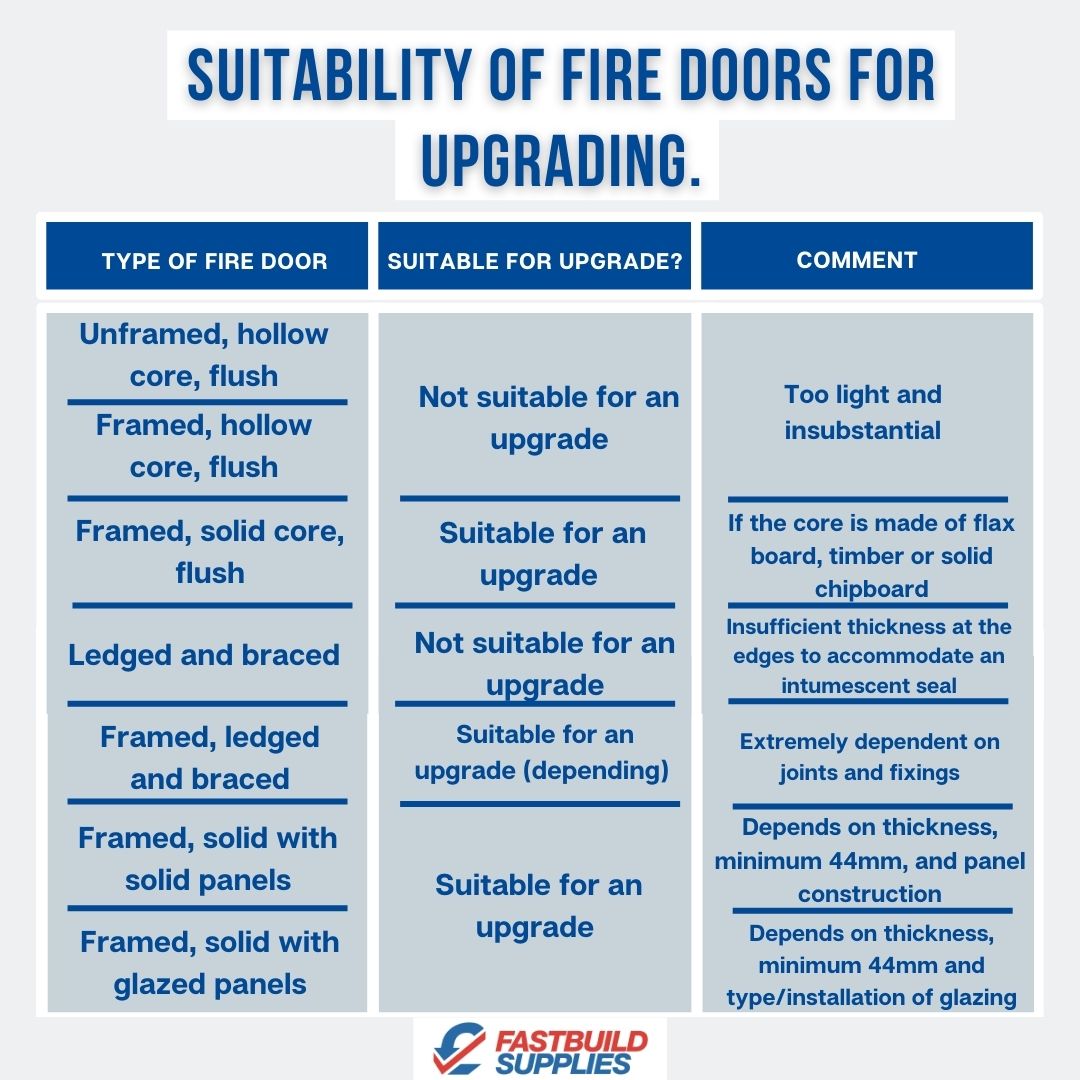
Methods Of Upgrading Your Fire Door
There isn't a 'one size fits all' method of upgrading an existing door, and the chosen resolution will need to factor in the door's construction, the materials used, condition of the door, the property and customer requirements.
So let's discuss some of the methods that have been successfully used previously.
Facing the Door Leaf with a Non-Combustible Board
The first method is the simplest way to upgrade a door to a fire door, and heritage authorities often prefer it as it is a reversible process; however, it may not be the most aesthetically pleasing.
The facing should be applied symmetrically to each face; however, it is imperative to note that the added thickness and weight change the frame or ironmongery requirements.
Sandwiching Panels
This second method is quite a bit more tricky than the previous one, and it does require the correct tools and skills for the job. However, the positive to choosing this method is that it allows you to maintain the original look of the door. This method is designed for the use of interior panel doors.
The weakest part of a panel door is the panel itself; as a standard, the panel won't often exceed 10mm in thickness. This method involves removing the panels from the door and splitting them down the middle of the thickness. A non-combustible board or intumescent sheet is then inserted between the two halves and re-attached to the original door.
This method works primarily for heritage sites that require the original look of the property to be maintained.
Intumescent Paints and Varnishes
Intumescent paints and varnishes are possible for application on wood-based fire-resistant doorsets where a maximum performance of 30-minute integrity is necessary. These products demand intensely particular application techniques and depend on the doorset construction's fundamental condition.
Excellent care should be taken to guarantee that total test data for the product is both available and appropriate for the application in question.
How To Maintain A Fire Door
It is imperative that fire doors are inspected regularly to ensure they remain at regulation standard. This is because fire doors and engineered are products that could potentially be the difference between life or death in the event of a fire.
Doorsets fitted with hold-open devices or swing-free type closers should be closed daily, particularly overnight, when there is likely low building occupancy. Fire doors should be completed at least weekly for busy 24/7 buildings (e.g. hospitals). All fire doors should close effectively from any angle of opening, using only the door closer.
There are a number of reasons why doors may fail to close:
- Foreign bodies or other objects may be obstructing the door.
- The smoke seals may be incorrectly fitted or damaged.
- If a latch is fitted, it may malfunction or require lubrication.
- The closing device may need adjustment, but this must only be done as a last resort and very carefully to ensure that the door can be opened without undue force.
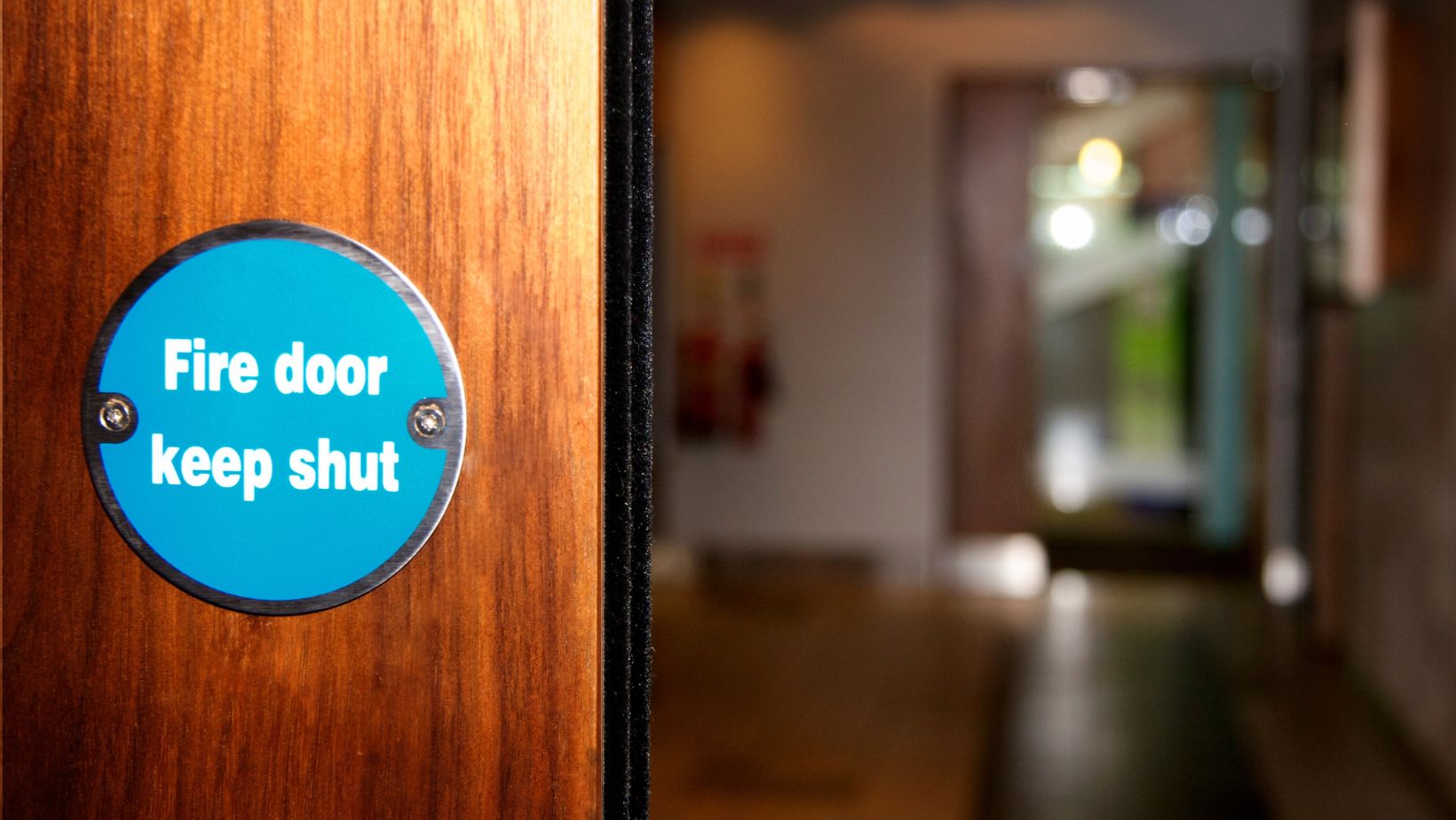
One of the first things that need to be considered for fire door maintenance is ensuring that the fire doors in question can fully close, allowing for maximum fire protection. At the end of each day, it is advisable that all fire doors are closed, and this must be communicated to the owner or client of the property.
There are several reasons fire doors may not be able to close:
- The intumescent smoke seals might be fitted incorrectly or damaged.
- If a latch has been fitted on the fire door, it may be faulty or require some oil or WD40.
- The closing device fitted on the fire door may require adjustments – it is important to note that the closing device on a fire door should only be worked on by an experienced individual who can guarantee that the door can be opened and closed afterwards.
- There may be an external obstruction to the door.
The second areas of a fire door that need regular inspections are the intumescent smoke seals; it is recommended that this happens at six-month intervals. If any are missing or damaged, they will need replacing immediately.
Mechanical parts of the fire door such as hinges, locks, latches, closers and floor springs can be worn down over time and become stiff, making the door difficult to open. Similarly, the ironmongery on the doors will also need a regular inspection. If a stiff or faulty piece of ironmongery is on a door, it should be replaced using the correct and certified ironmongery.
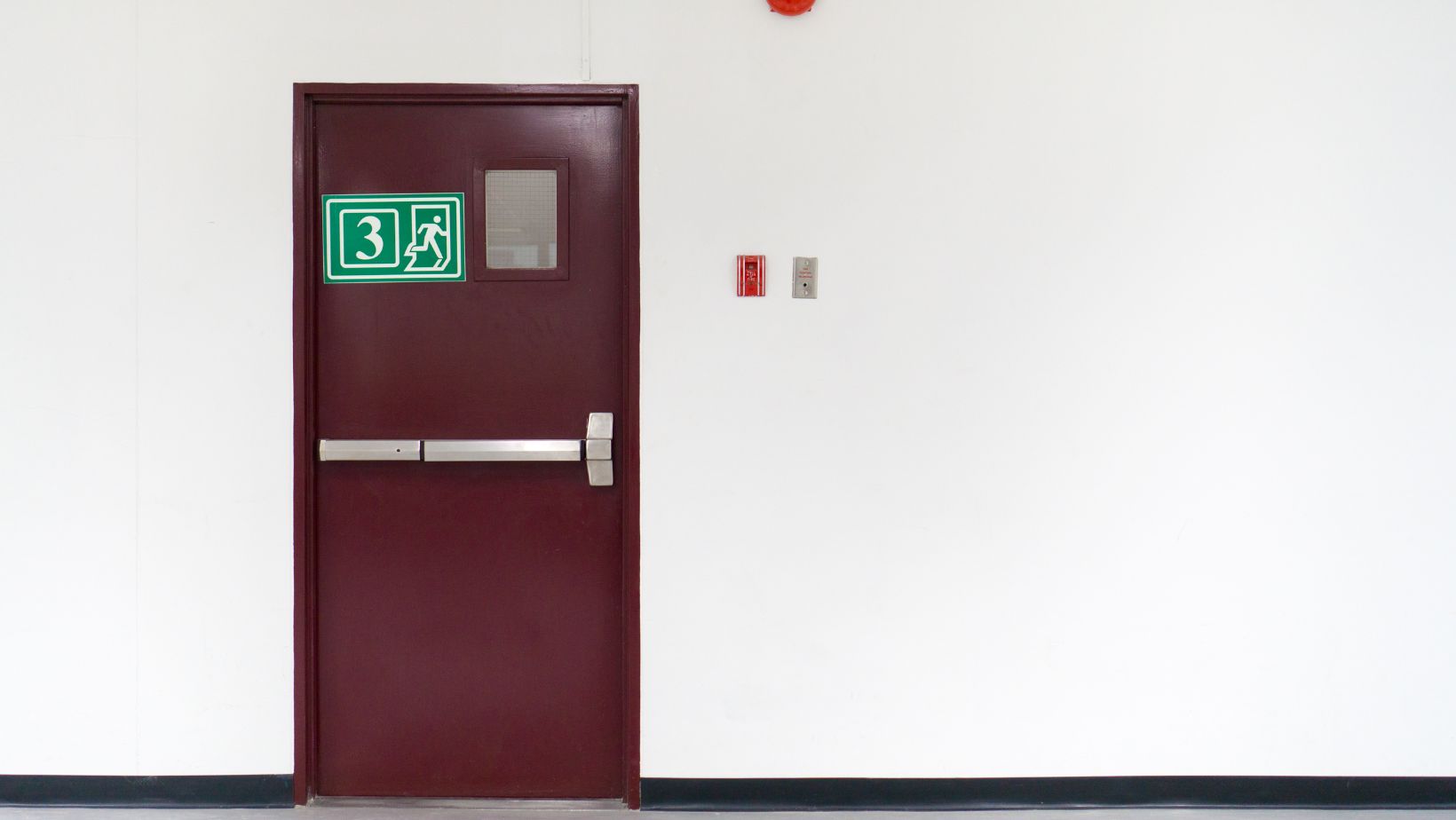
How Big Should the Gap around Fire Doors Be?
The guidelines surrounding the gap that can be left around a fire door should be between 2mm and 4mm. This ensures there is sufficient room for the intumescent strips and smoke seals to activate a swell in the event of a fire and to not be damaged in the daily opening and closing of said door. This can be measured using a gap gauge.
How Much Can You Cut Off A Fire Door?
The most important thing to note when answering this question is that it all depends on the manufacturer's specifications, so before cutting anything off a fire, the door makes sure to contact them to find out.
Nevertheless, there are still general rules that can be applied to most fire doors. They are:
- Nothing must be cut at the top at all.
- All certification labels must remain intact.
- You may be able to make up to a 3mm adjustment to the side of the door.
Hopefully, this has given you some guidance as to the UK fire door regulations and requirements, so you can be confident going forward. For more information or to answer any specific questions, you can head to the government website for a full detailed breakdown.
You can also read up on the UK’s stud partition wall regulations in our blog post in the knowledge centre.




